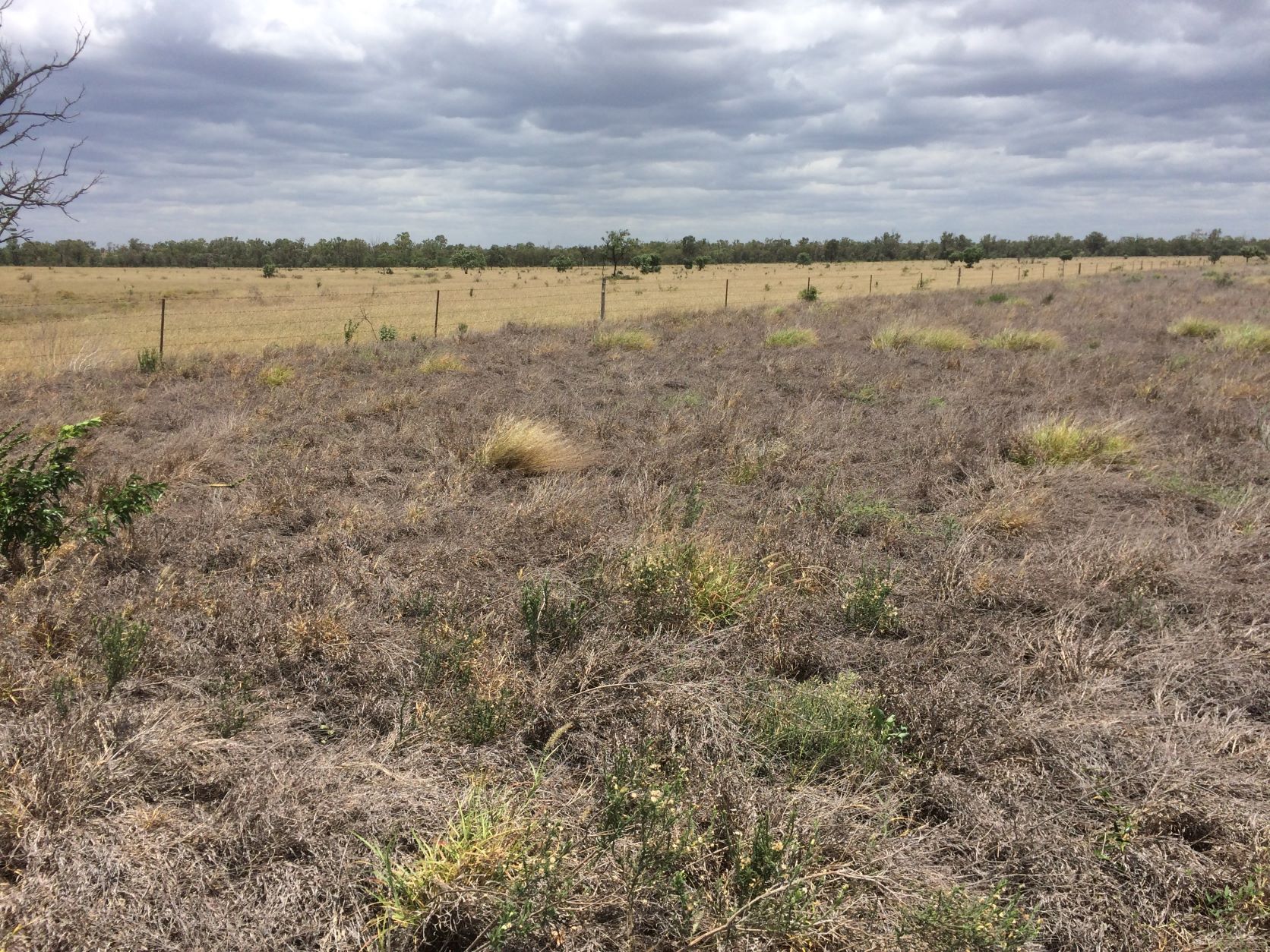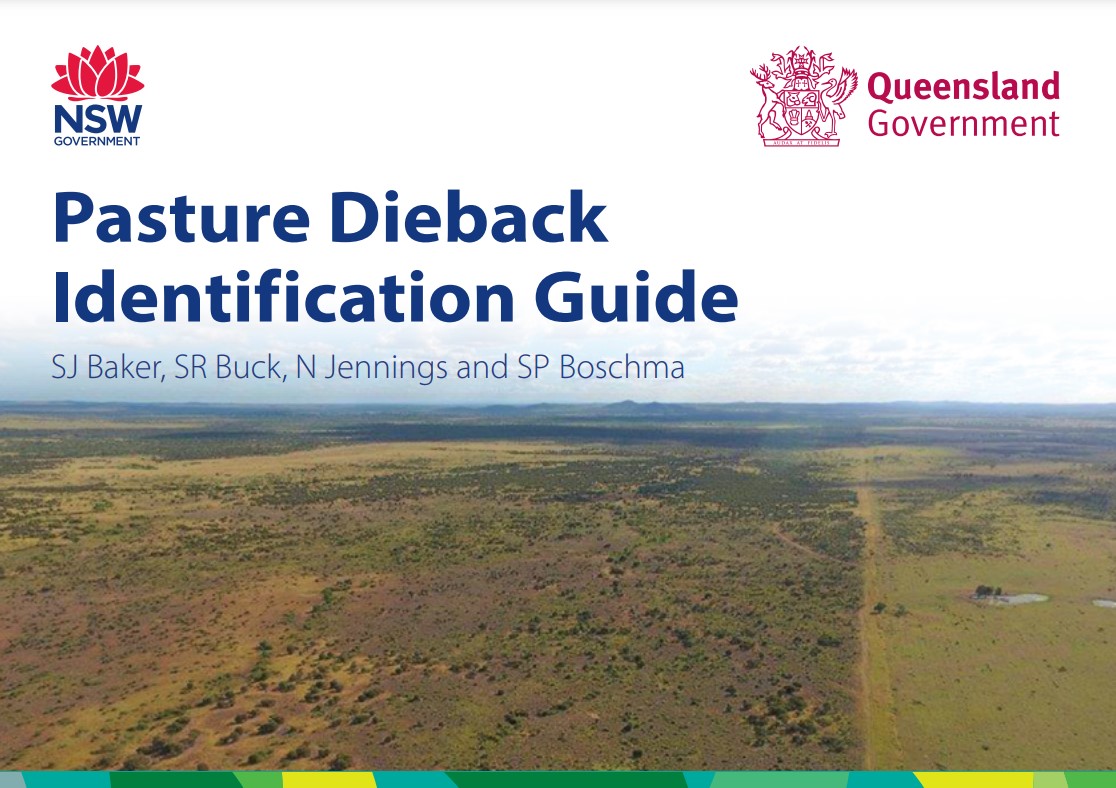Pasture dieback update — December 2021
After recent good rainfall across large areas of Queensland, graziers need to be to be on the look-out for pasture dieback.
How to identify pasture dieback?
Dieback causes pasture death, typically in patches. Water and temperature stress, nutrient deficiency and herbicide damage can present similar symptoms. Pathogens such as fungal infections (e.g. buffel grass blight) can be misdiagnosed as dieback. It is important to exclude these to definitively diagnose dieback. The four stages of dieback are:
- Yellowing and/or reddening of individual leaves, starting from older leaves.
- Stunted, unthrifty plants in patches and in severe cases, across whole paddocks – with yellowing and/or reddening of multiple leaves or the whole plant.
- Plant death, in patches or whole paddocks.
- Broadleaf plants colonising areas of dead pasture. Dead pasture plants are grey and easily uprooted.
A new pasture dieback identification guide is now available.
What is the cause?
The Department of Agriculture and Fisheries (DAF) is undertaking research into potential casual agents. These include the plant microbiome (fungi, bacteria, viruses, and protozoa), insects such as pasture mealybug, nematodes, and soil nutrient levels. At this stage the likely cause of pasture dieback is a pathogenic organism. Potentially a number of agents are interacting, for example, a virus transmitted by a sap sucking insect.
What options do I have to manage pasture dieback?
DAF is undertaking field research to identify effective management options. Options are grouped into four categories:
-
Manage for recovery
Some paddocks are recovering with pastures re-establishing from the soil-seedbank. Recovery is fastest when stock numbers are matched to the available pasture and where weeds are controlled. This allows seedlings to establish without being restricted by grazing or competition for moisture from weeds.
-
Improve the pasture
Pasture improvement can be undertaken by sowing legumes and tolerant grasses, fertilising, renovating, or a combination. Pasture renovation through cultivation can break a pathogen cycle and accelerate nutrient cycling, providing a better environment for new seedlings. Likewise, appropriate fertilising (after a soil test) will maximise pasture productivity. Grazier experience and DAF trials demonstrate that legumes are unaffected by dieback. Economic research shows that legumes significantly improve business profitability. There are legumes suitable for all areas and soil types across Queensland.
-
Sow a break crop
A break crop, such as a grain or forage crop, can be used in suitable country to break a pathogen cycle and generate short-term feed supply. The aim is to sow a break crop for 1-2 years then return the paddock to perennial pasture.
-
Treat a pathogen
This option includes spraying an insecticide or using fire to control a pathogen. Insecticides have not produced beneficial outcomes in DAF trials. The trials demonstrated the importance of beneficial (predatory or parasitic) insects – these need to be encouraged and not disadvantaged by insecticides. Spring burning has produced limited benefits in trials; however, several graziers have reported that late wet-season mosaic burns provided temporary benefits. Based on these outcomes, and uncertainties about the practicality and effectiveness of insecticide application in commercial situations, most graziers are better off choosing another option. If insecticide spraying is considered necessary for pasture mealybug control, products are available via emergency permits issued by the Australian Pesticides and Veterinary Medicine Authority (APVMA). The application requirements on the permit must be adhered to. These products have relatively long non-graze periods after application.
For more information
If you would like assistance, clarification or more information, contact the DAF customer call centre on 13 25 23 and talk to your local beef extension officer or pasture agronomist.
We also have a range of resources: www.futurebeef.com.au/pasture-dieback
Written by Kylie Hopkins, Beef Extension Officer and Stuart Buck, Principal Agronomist (Sown Pastures), DAF Rockhampton.
